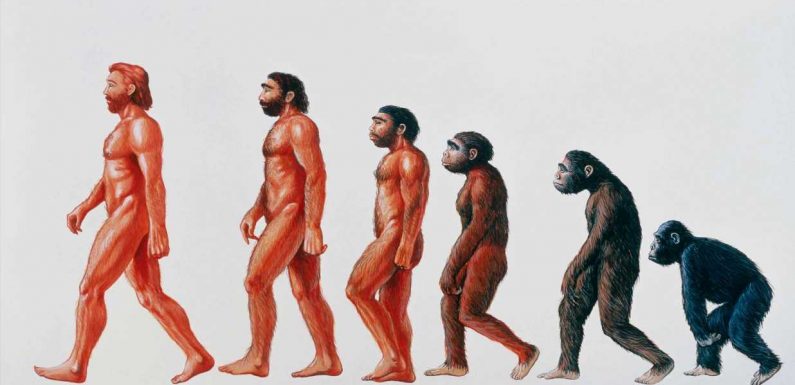
HUMANS have learned to walk all over the Earth, on the Moon, and have even invented walking robots.
But just how did walking come about – and how long have we been doing it?
When was walking first invented?
The earliest evidence of animals beginning to walk like we do today was around four million years ago.
And it was three million years ago, in Kenya, that footprints showed walking patterns very similar to those of humans now.
Since then, humans have developed lots of different ways of walking, and found different uses for it.
The two-legged walking we know today frees up hands for making, carrying, and catching.
But not all walking animals have the same walking ancestor, and many animals walk on more than two legs.
The idea of a mile was created by walking, because the Romans decided 2,000 steps – or 1,000 military paces – was equivalent to a mile.
Long-distance walking developed through the ages as a competitive sport, and was the leading sport in Europe and America between 1860 and 1903.
At this time, long-distance walkers earned relatively more than today’s basketball players in Europe and America.
In 2004, Polly Letofsky became the first American woman to walk around the world, achieving perhaps the longest-ever walk.
Walking has been used to raise money, through sponsored walks, for over 50 years – but this concept made it big with the Three Day Walk for Breast Cancer, first held in 1998.
In the 1990s walking became the most popular form of exercise in the US.
Health benefits include prevention of heart disease, diabetes, anxiety and depression.
How was walking invented?
Walking the way humans do, on two legs, was likely invented as a way of freeing up our hands for use.
This was very important in human evolution because we were able to make fire to cook food, which made it metabolically possible for us to develop our complex brain.
At the start, it is likely that ape-like animals in our evolutionary past may have walked upright and used their hands to pick fruit or catch prey.
Over hundreds of years humans have found all sorts of new uses for walking.
Competitive walking was invented by humans who liked to showcase their remarkable feats of achievement.
Roman Emperor Hadrian marched 21 miles a day in full armour to tour his whole empire in 100AD.
Pedestrianism, which is ultra distance walking, was invented because humans like to push the boundaries of how far they can walk.
In 1908, 3,500-metre, ten-mile, and 20- and 50-kilometre race walks were held at the London Olympics.
And, in 1911 the first US race walk took place, held on Coney Island in New York.
Racewalking, speed walking, power walking, and ultimately Afghan walking, were invented because humans like to see how fast they can walk.
Afghan walking is said to have come from caravaners who, it is said, can travel for up to 60 kilometres a day, for dozens of days, by combining rhythmic breathing with walking.
Walking became part of worship too, and record numbers trod the Camino de Santiago in 2015, inspired by the 2011 movie, The Way.
The oldest surviving walking club, Black Forest Wanderverein, was formed in Germany in 1864.
Many humans like to have beautiful or useful footwear to strut their stuff, and even people living in North America were making sling-back and slip-on shoes between 8000 and 10,000 years ago.
Source: Read Full Article


